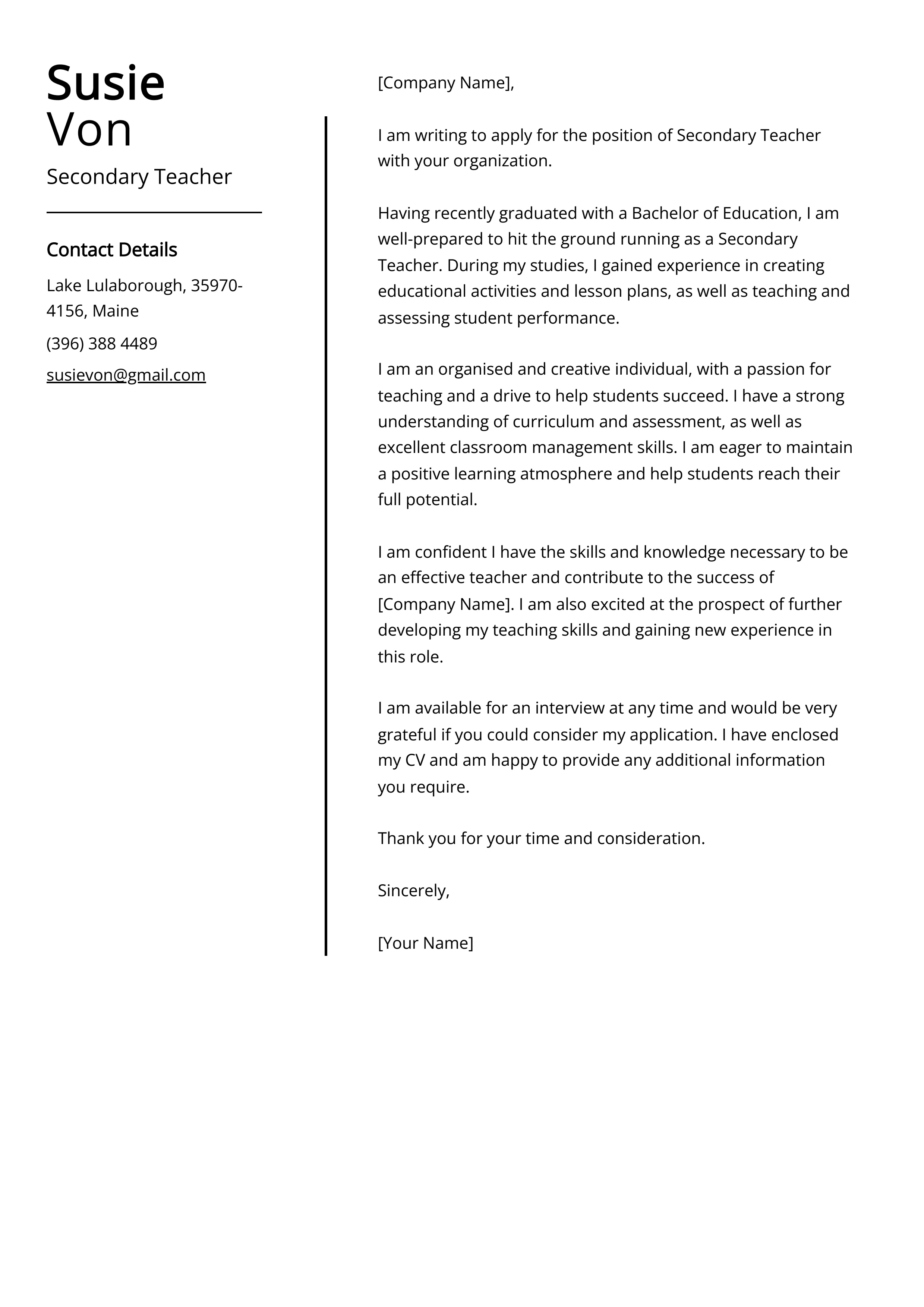Understanding the Importance of a Cover Letter
In the competitive field of teaching, a well-crafted cover letter can be the key that unlocks your dream job. Often overlooked, the cover letter provides a crucial opportunity to go beyond the confines of your resume and make a lasting impression on potential employers. It’s your chance to showcase your personality, passion for education, and unique qualifications that set you apart from other candidates. A strong cover letter is not merely a formality; it’s a strategic tool designed to captivate the reader and secure an interview. Without a compelling cover letter, your application may be relegated to the ‘rejected’ pile before your resume even receives a second glance. Therefore, investing time and effort into crafting a standout cover letter is an investment in your future.
Why Cover Letters Are Essential
Cover letters serve as the first point of contact, allowing you to introduce yourself and highlight your key qualifications. They provide context to your resume, explaining your career goals and how your experience aligns with the specific teaching position. This is particularly important in teaching, where aligning your teaching philosophy and approach with the school’s values is crucial. Cover letters also allow you to demonstrate your communication skills. A well-written letter speaks volumes about your ability to articulate thoughts clearly, a skill vital for educators. Moreover, they offer a space to showcase your personality and enthusiasm, qualities that can be challenging to convey solely through a resume. Ultimately, a cover letter is a tailored narrative that humanizes your application and increases your chances of landing an interview.
How Cover Letters Complement Resumes
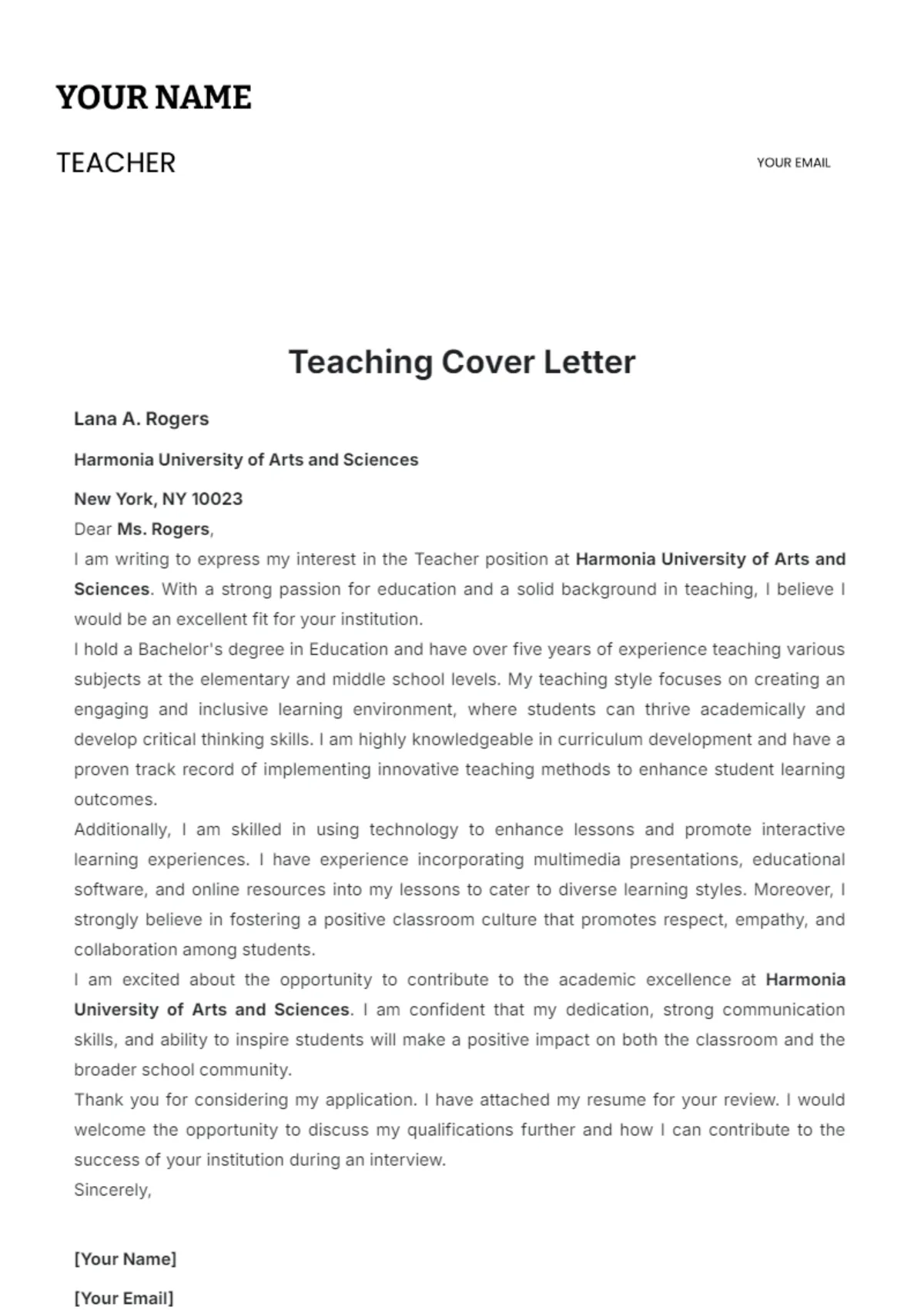
While your resume offers a concise overview of your qualifications, your cover letter complements it by providing depth and context. The resume lists your skills, experiences, and achievements, while the cover letter explains them in detail. You can elaborate on specific projects, teaching methodologies, or classroom management strategies, all while showcasing the ‘why’ behind your career choices. Think of your resume as a snapshot and your cover letter as the story behind it. The cover letter also allows you to address any gaps in your employment history or explain career transitions, which can be particularly beneficial in the dynamic world of education. By harmonizing the two documents, you create a comprehensive presentation of your skills and a clear picture of you as a prospective teacher. (cover-letter-teaching-resume.webp)
Key Components of a Compelling Cover Letter
Header and Contact Information
Start with a professional header that includes your name, address, phone number, and email. Always use a professional email address, avoiding nicknames or informal language. The date, and the hiring manager’s name and title (if known) should follow, along with the school or district’s address. This establishes professionalism and shows you’ve researched the school. If you cannot find the hiring manager’s name, address your letter to the ‘Hiring Committee’ or ‘Human Resources Department’. Precision and attention to detail in this section set the tone for the rest of your application and indicate you’re taking the process seriously. This step demonstrates your commitment to the role and your ability to follow basic instructions.
The Opening Paragraph Grabbing Attention

Your opening paragraph should immediately grab the reader’s attention. Avoid generic phrases. Instead, express your enthusiasm for the specific teaching position or the school. If someone referred you, mention the connection. Briefly state the position you’re applying for and, most importantly, why you’re a great fit. This is your hook. You want the hiring manager to keep reading. Consider using a captivating anecdote from your teaching experience or a brief statement about your teaching philosophy. The opening should clearly demonstrate your understanding of the school’s mission and your desire to contribute. The goal is to pique the reader’s curiosity and compel them to delve deeper into your application. This initial impression can make or break your chances.
Highlighting Relevant Skills and Experience
This is where you demonstrate how your skills align with the job requirements. Select key qualifications and experiences from your resume and elaborate on them, providing specific examples and quantifiable achievements. (cover-letter-teaching-skills.webp) Instead of simply stating you have excellent classroom management skills, provide an example of a time you successfully implemented a new strategy to improve student behavior. Focus on experiences that directly relate to the position and demonstrate a clear understanding of the school’s needs. Use action verbs to describe your accomplishments, such as ‘developed,’ ‘implemented,’ ‘managed,’ or ‘achieved.’ Show, don’t just tell; provide evidence of your capabilities and how you’ve made a positive impact in past teaching roles.
Quantifying Achievements
Whenever possible, quantify your achievements. Instead of saying ‘improved student test scores,’ state ‘increased student test scores by 15% within one semester.’ Providing concrete numbers adds credibility to your claims and demonstrates the impact of your work. Other examples of quantifying achievements include the number of students you’ve taught, the percentage of student engagement you’ve increased, or the specific projects or initiatives you’ve led. Using metrics demonstrates that you can measure success and use data to improve teaching practices. Quantifiable data makes your accomplishments more persuasive and leaves a lasting impression on the hiring manager. Consider using numbers throughout the letter.
Tailoring Your Letter to the Specific Job
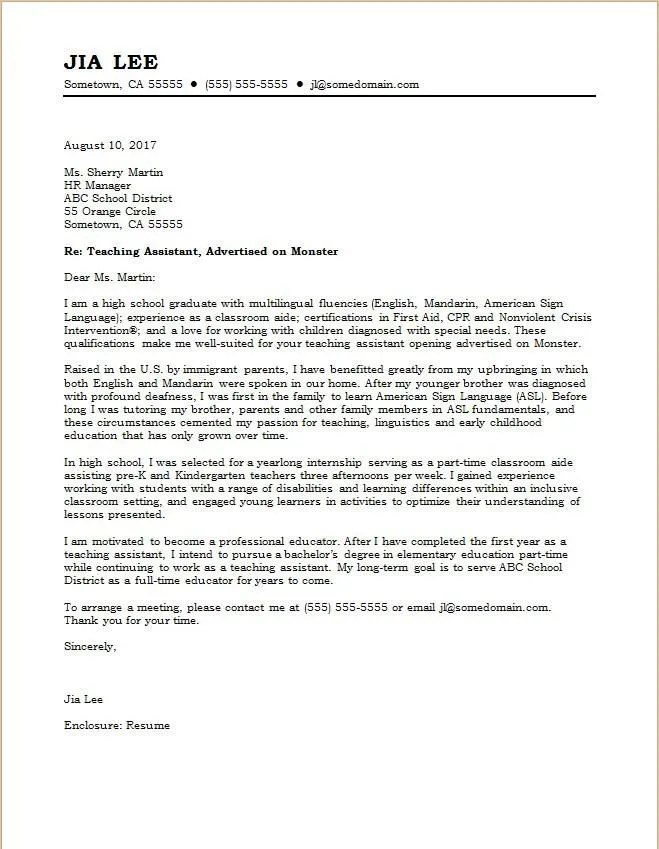
One of the most crucial tips for a compelling cover letter is to tailor it to each specific job. Generic cover letters are easily spotted and often discarded. Thoroughly research the school, its mission, and the specific requirements of the teaching position. Address the unique needs and values of the school. Make sure the skills and experiences you highlight align with what the school is looking for. By demonstrating that you understand the school’s specific needs, you show you’re genuinely interested in the position. Also, ensure you use keywords from the job description. This helps the hiring manager quickly see that you are a good match. A tailored cover letter demonstrates that you’ve put in the effort and that you’re enthusiastic about the opportunity.
Addressing the Employer’s Needs
In your cover letter, focus on how you can meet the employer’s needs. Identify the challenges the school or district faces and explain how your skills and experience can help solve those problems. For example, if the school emphasizes technology integration, highlight your experience using educational technology tools. If the school values a specific teaching approach, align your cover letter with that approach. Demonstrating your understanding of the employer’s needs positions you as a valuable asset, and someone who can contribute directly to their goals. By emphasizing how you can solve problems and add value, you increase your chances of securing an interview. This proactive approach shows you have done your homework.
The Closing Paragraph Call to Action
End your cover letter with a strong call to action. Express your enthusiasm for the position and reiterate your interest in an interview. Provide your contact information again and clearly state how the hiring manager can reach you. Thank the reader for their time and consideration. A well-crafted call to action leaves a lasting impression and makes it easy for the hiring manager to take the next step. Avoid passive language; be confident and proactive. Instead of saying, ‘I hope to hear from you soon,’ try ‘I am eager to discuss how my skills and experience can contribute to your school, and I welcome the opportunity to speak with you in an interview.’ Make it easy for them to take action (cover-letter-teaching-management.webp).
Proofreading and Formatting
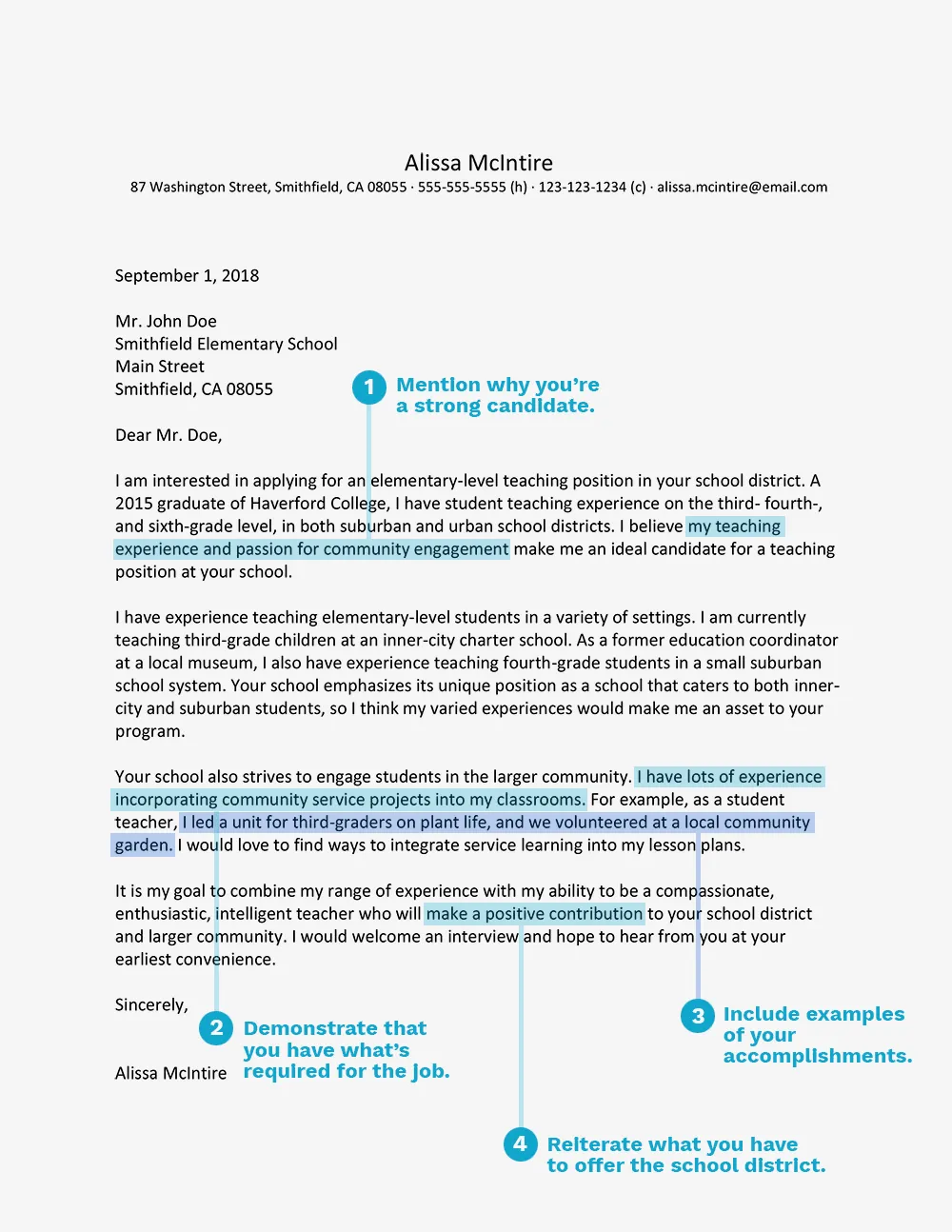
Ensuring Clarity and Professionalism
Clarity and professionalism are essential for a successful cover letter. Ensure your writing is clear, concise, and easy to understand. Avoid jargon or overly complex language. Proofread your cover letter carefully for any grammatical errors, typos, or inconsistencies. Having a colleague or friend review your letter can provide a fresh perspective and catch mistakes you might have missed. A well-written, error-free cover letter reflects attention to detail and demonstrates your commitment to quality. Using correct grammar and spelling shows you take the application process seriously, a characteristic vital for an educator. Double-check all your information, including the hiring manager’s name and title, and the school’s address. (cover-letter-teaching-formatting.webp)
Formatting Tips for Readability
Good formatting enhances readability. Use a standard, easy-to-read font like Times New Roman or Arial, and a font size between 11 and 12 points. Use single spacing within paragraphs and double spacing between paragraphs. Use appropriate margins (1 inch is standard) and align your text to the left. Use bullet points and short paragraphs to break up large blocks of text and make your cover letter easier to scan. Be sure the layout is clean and consistent. Formatting can significantly affect how the reader perceives your cover letter. A well-formatted letter is easier to read, which increases the chances the reader will carefully review your content. The use of white space is crucial to avoid a cluttered appearance. Ensure your cover letter looks professional and polished.
Common Cover Letter Mistakes to Avoid
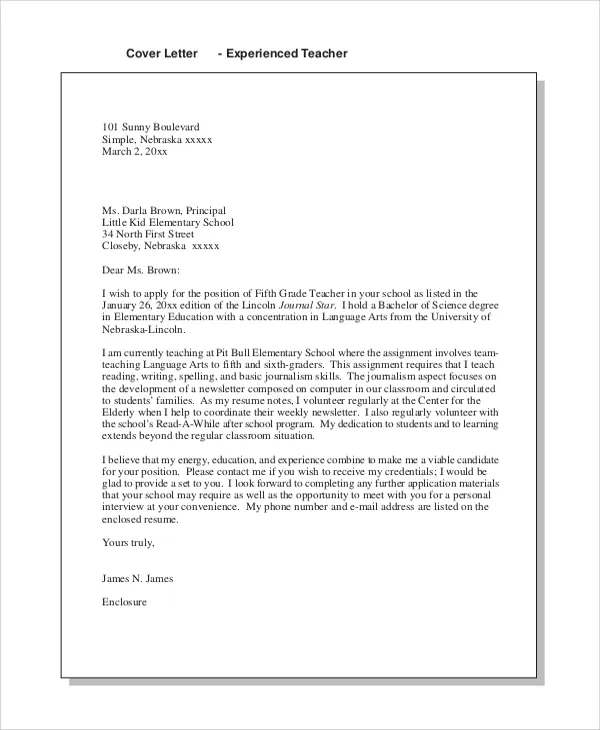
Generic Cover Letters
Generic cover letters are the most common and most detrimental mistakes. They fail to capture the reader’s interest and can be easily identified. Avoid using a template that does not address the specifics of the job or the school. Each cover letter should be tailored to the position you’re applying for. Do not recycle the same cover letter for multiple applications. The time it takes to personalize your letter will pay off. Research the school’s mission, values, and requirements to demonstrate your understanding and enthusiasm. The more personalized your cover letter is, the greater your chance of being noticed. Make sure you use the correct school name, hiring manager, and position title.
Typos and Grammatical Errors
Typos and grammatical errors create a poor first impression and undermine your credibility. Sloppy writing suggests a lack of attention to detail and professionalism. Carefully proofread your cover letter multiple times. Use a spell-checker, but do not rely on it entirely. Have a friend or colleague review your cover letter for mistakes you might have missed. Read your cover letter aloud to catch awkward phrasing. Errors detract from your message and make it difficult for the reader to take your application seriously. Take the time to ensure your cover letter is polished and error-free to maximize your chances of getting an interview. (cover-letter-teaching-mistakes.webp)
Failing to Highlight Relevant Skills
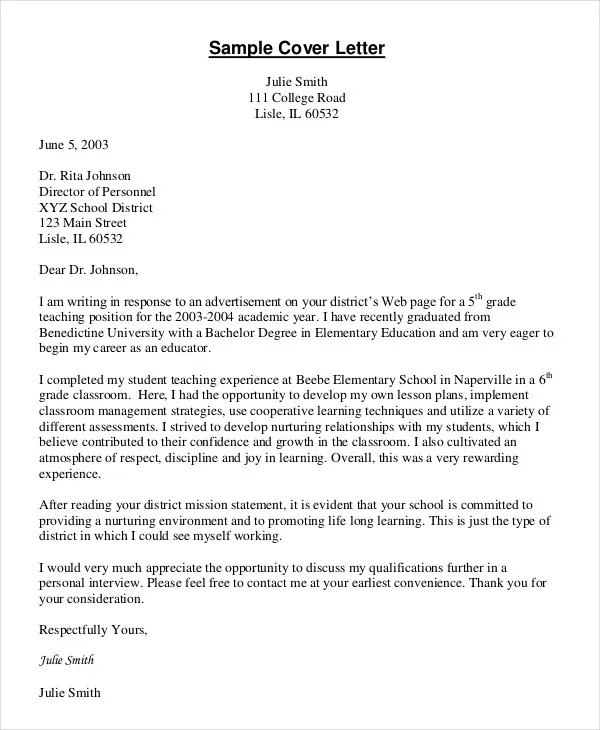
Failing to highlight the skills most important for the teaching role is another common mistake. Your cover letter should emphasize how your skills and experiences align with the job requirements. Instead of simply listing your skills, provide specific examples of how you’ve utilized them in the classroom. Tailor your cover letter to the school and the specific teaching position. Avoid generalizing; instead, focus on the skills the school is looking for. Demonstrate how your expertise can benefit the students and the school. By emphasizing your strengths, you increase your chances of being selected for an interview.
Showcasing Your Teaching Philosophy
Your Approach to Classroom Management
In your cover letter, you can showcase your approach to classroom management, which is essential to a teaching position. Describe your strategies for creating a positive and productive learning environment. Talk about your approach to student discipline. Do you use restorative justice, positive reinforcement, or another strategy? Provide examples of how you’ve effectively managed classroom behavior. Demonstrate how you create a supportive and inclusive classroom. Your ability to manage a classroom affects student learning, so it’s critical to demonstrate this. Briefly touch upon your strategies, such as establishing clear expectations, using positive language, building rapport, and creating engaging lessons.
Demonstrating a Passion for Education
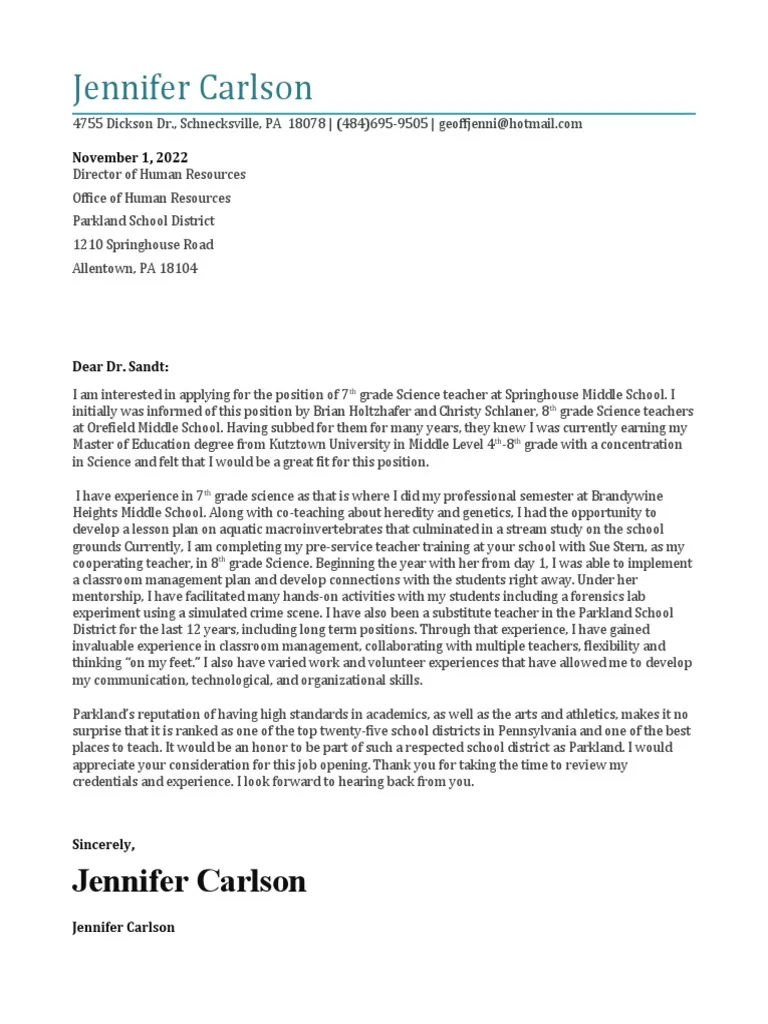
Express your passion for education in your cover letter. Enthusiasm is contagious, and it can make a significant difference in the hiring manager’s decision. Describe what inspires you about teaching and what motivates you to work with students. Share why you chose teaching as a career. Your passion for education is a vital quality for a teacher. Include your teaching philosophy. Your values should align with the school’s values. Demonstrate how you are excited to contribute to a school’s community. Be genuine and enthusiastic to make a positive impression and show that you are the right fit. (cover-letter-teaching-passion.webp)
